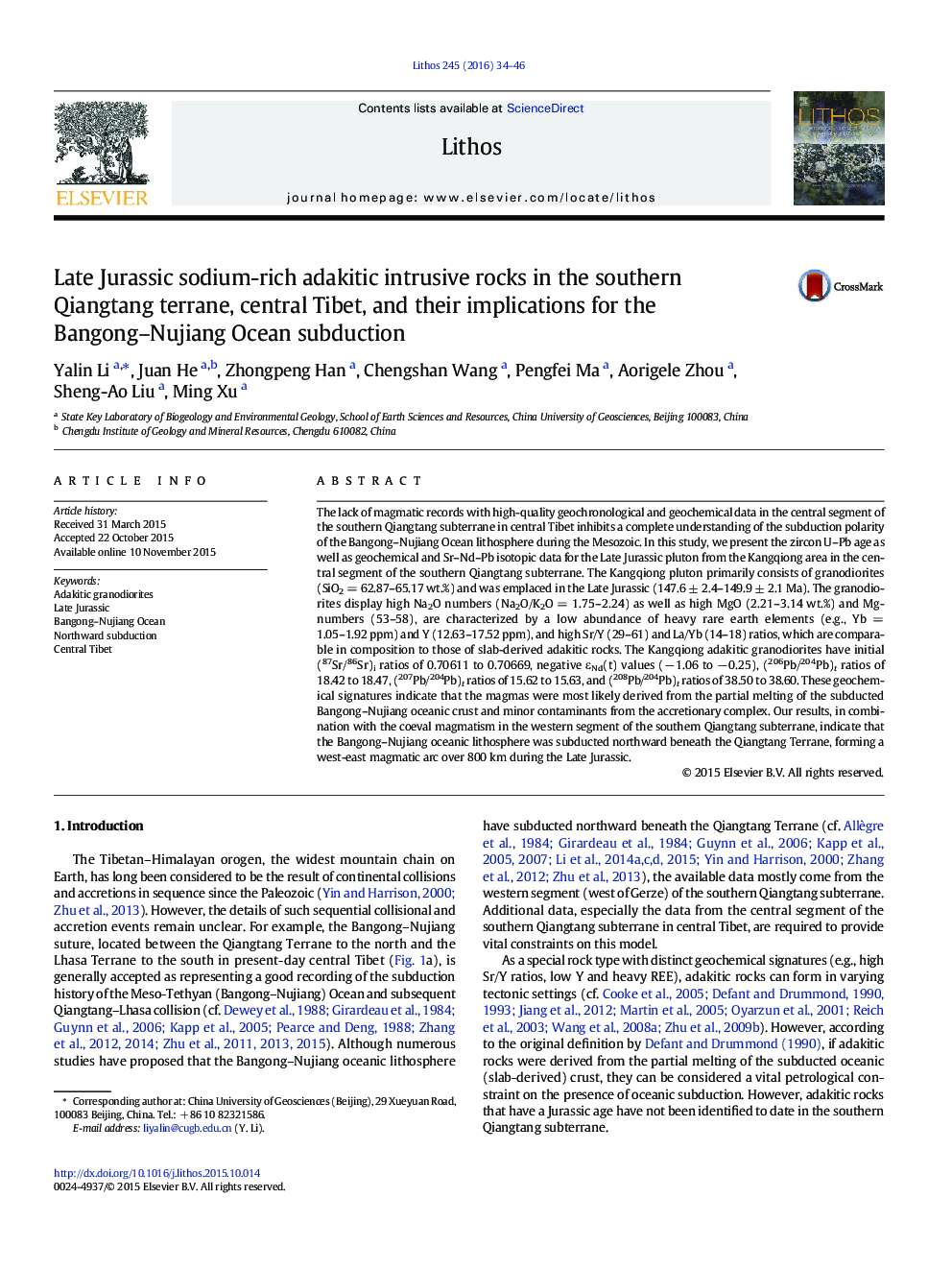| کد مقاله | کد نشریه | سال انتشار | مقاله انگلیسی | نسخه تمام متن |
|---|---|---|---|---|
| 4715524 | 1638651 | 2016 | 13 صفحه PDF | دانلود رایگان |

• Newly discovered adakitic rocks in the southern Qiangtang subterrane
• Adakitic rocks were generated in the Late Jurassic (148–150 Ma).
• Bangong–Nujiang Ocean subducted northward beneath the Qiangtang terrane.
The lack of magmatic records with high-quality geochronological and geochemical data in the central segment of the southern Qiangtang subterrane in central Tibet inhibits a complete understanding of the subduction polarity of the Bangong–Nujiang Ocean lithosphere during the Mesozoic. In this study, we present the zircon U–Pb age as well as geochemical and Sr–Nd–Pb isotopic data for the Late Jurassic pluton from the Kangqiong area in the central segment of the southern Qiangtang subterrane. The Kangqiong pluton primarily consists of granodiorites (SiO2 = 62.87–65.17 wt.%) and was emplaced in the Late Jurassic (147.6 ± 2.4–149.9 ± 2.1 Ma). The granodiorites display high Na2O numbers (Na2O/K2O = 1.75–2.24) as well as high MgO (2.21–3.14 wt.%) and Mg-numbers (53–58), are characterized by a low abundance of heavy rare earth elements (e.g., Yb = 1.05–1.92 ppm) and Y (12.63–17.52 ppm), and high Sr/Y (29–61) and La/Yb (14–18) ratios, which are comparable in composition to those of slab-derived adakitic rocks. The Kangqiong adakitic granodiorites have initial (87Sr/86Sr)i ratios of 0.70611 to 0.70669, negative εNd(t) values (− 1.06 to − 0.25), (206Pb/204Pb)t ratios of 18.42 to 18.47, (207Pb/204Pb)t ratios of 15.62 to 15.63, and (208Pb/204Pb)t ratios of 38.50 to 38.60. These geochemical signatures indicate that the magmas were most likely derived from the partial melting of the subducted Bangong–Nujiang oceanic crust and minor contaminants from the accretionary complex. Our results, in combination with the coeval magmatism in the western segment of the southern Qiangtang subterrane, indicate that the Bangong–Nujiang oceanic lithosphere was subducted northward beneath the Qiangtang Terrane, forming a west-east magmatic arc over 800 km during the Late Jurassic.
Figure optionsDownload as PowerPoint slide
Journal: Lithos - Volume 245, 15 February 2016, Pages 34–46